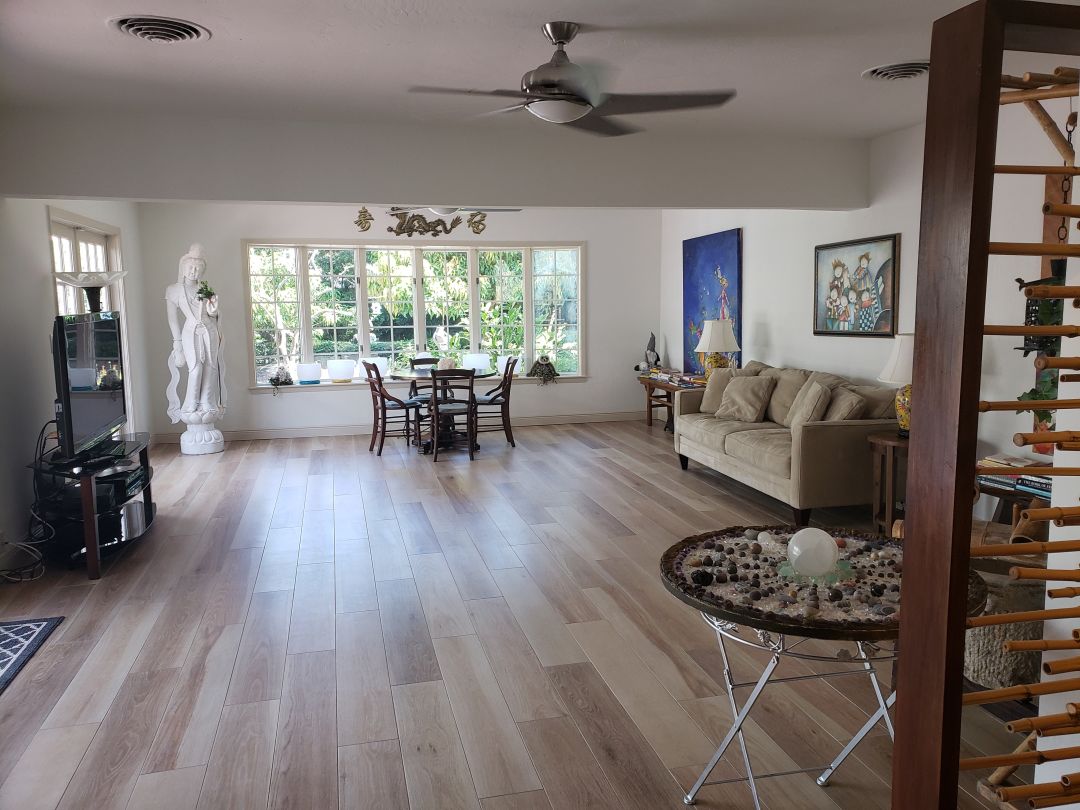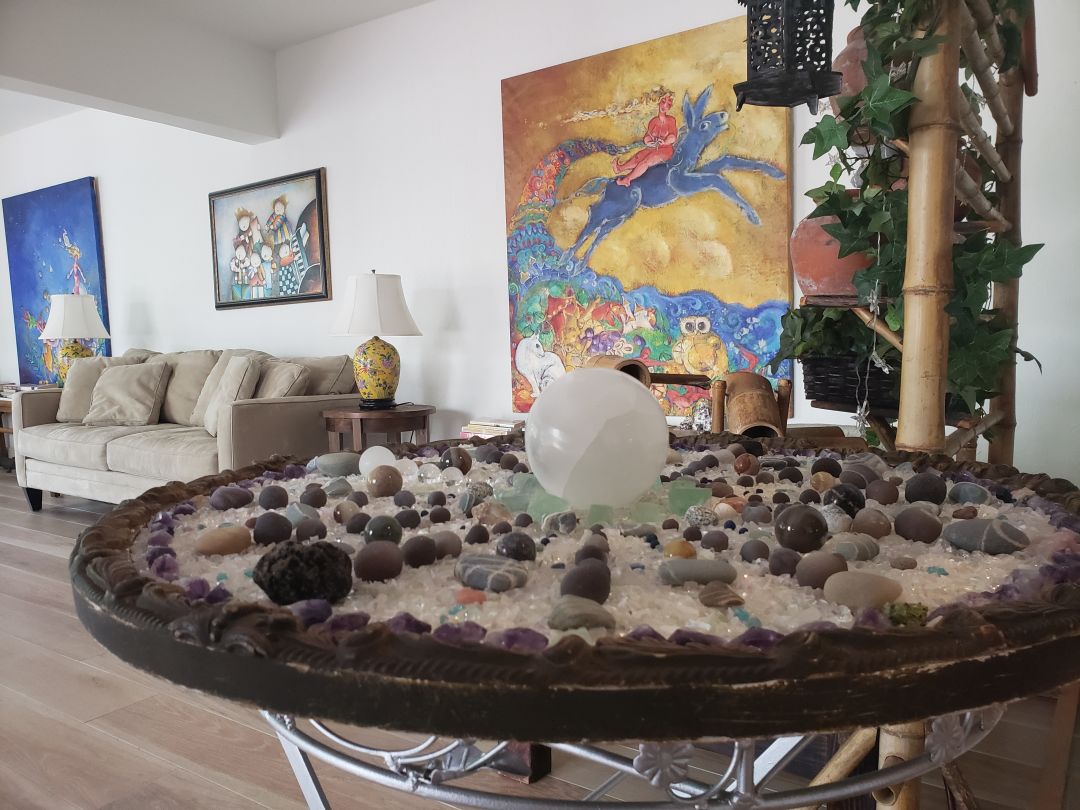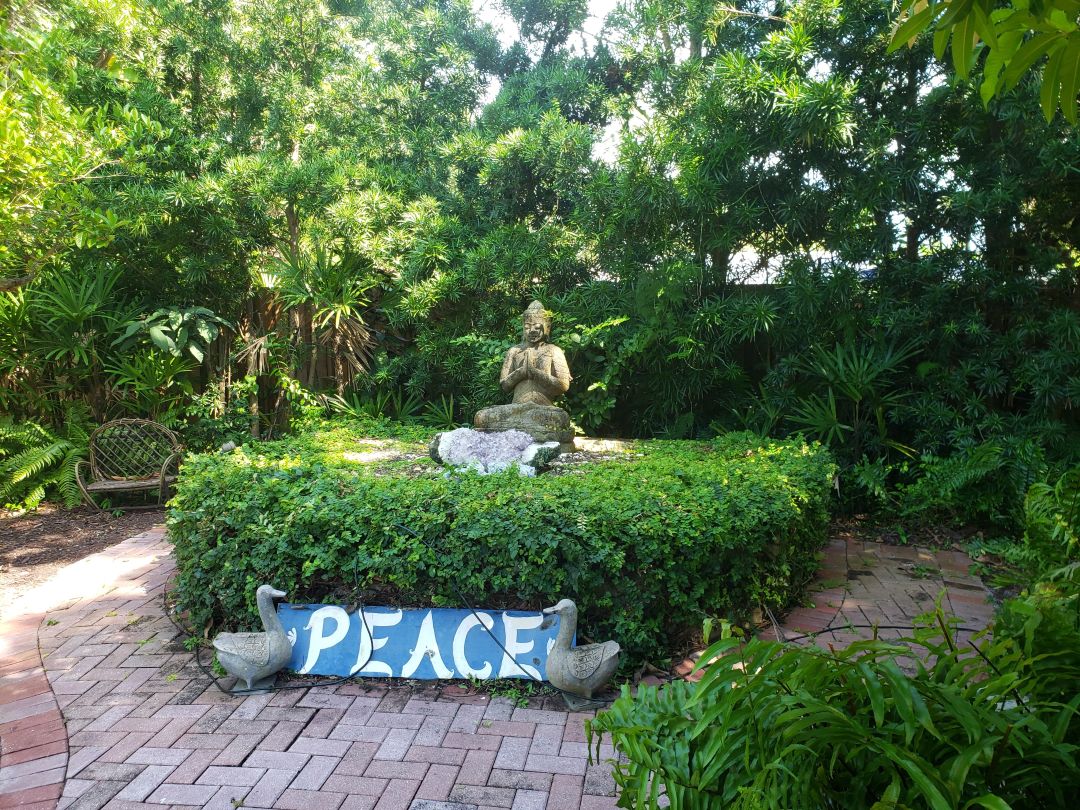Feng Shui Expert Kathy Keh Takes Us Inside her Home

Kathy Keh's feng shui-ed living room.
Image: Courtesy Photo
“There are many different ways to practice feng shui,” says Kathy Keh, proprietor of Sarasota’s Bright Life, a holistic educational and consultation enterprise (formerly Feng Shui Sarasota).
Keh spent more than 20 years in high-pressure corporate and nonprofit positions, mainly in Manhattan, before realizing she needed a change. “I never felt like I was doing what I was supposed to do,” she says. She moved here 10 years ago and opened a storefront for Feng Shui Sarasota (she’s since dropped the retail portion of the business) while also taking time to study in China and with feng shui experts all over the world.
Her Southgate home, which now doubles as a space for Bright Life workshops and consulting sessions, is an ode to the feng shui principles and symbols that best serve her own life, goals and outlook. There are wide-open spaces, natural light streaming in from many windows that also display the greenery outside, ceramic “wood-look” tile floors, neutral tones punctuated by carefully chosen colors (Keh has a particular fondness for blood red), and hundreds of carefully placed items—from crystals and statues to paintings and plants—that tie directly into Keh’s sense of her own energy and history and how she feels and thinks as she moves through her space. “It’s stuff that makes me happy, that I wanted to achieve,” she says.

Hundreds of carefully placed items—from crystals and statues to paintings and plants—tie directly into Keh’s sense of her own energy and history and how she feels and thinks as she moves through her space.
Image: Courtesy Photo
There are two primary types of feng shui: classical, which dates back thousands of years and stems from agrarian Chinese society, which focused on living in harmony with nature. Classical feng shui works to balance yin and yang and the five natural elements of ancient Chinese philosophy: fire, water, metals, wood and earth.
Modern feng shui, which became popular in the U.S. in the 1960s and was further popularized by a Berkeley professor in 1986, is rooted in the arrangement of spaces and symbols as guided by an individual’s intentions and intuitions. “It’s been proven that our thoughts are a form of energy,” says Keh. “You have an intention, and it’s attached to a thing or symbol. Those symbols are constantly radiating that intention all over your house, which your subconscious then absorbs.”
(Though Keh emphasizes the legitimacy of well-practiced modern feng shui, it’s this form of the discipline that sometimes gets co-opted in half-measures, turning it into Asian-inspired voodoo kitsch. “It’s not just that you stick a dragon somewhere and that means you’re going to have success or love,” she says. “Don’t put anything in your house that doesn’t mean anything to you.”)

Kathy Keh's backyard.
Image: Courtesy Photo
Nature is a major component of Keh’s classical feng shui practice. Her lush yard features a 6,000-gallon pond balanced by a border of stone and wood (she found the water alone projected too much energy), a butterfly waystation, and plant-lined paths and seating areas backed by a prominent fence—the Florida version of mountains, which, according to classical principles, provide a sense of safety at the back of a property.
Keh practices gardening as active meditation, focusing on the fluid nature of the activity that things are always changing and never finished. It took nearly two years of renovations to get her home as it is now, and it continues to evolve with her.
For people just starting out on their feng shui journey, rather than seeking out vaguely “symbolic” items to add to their space, Keh recommends making tiny, manageable efforts to declutter. Just as modern feng shui focuses on items that project positive intentions, clutter, she says, is something that nags at you subconsciously.
“The act of releasing stuff that no longer serves you is a way of opening up space,” she says, “An open space is creating room for new things to come into your life.”



